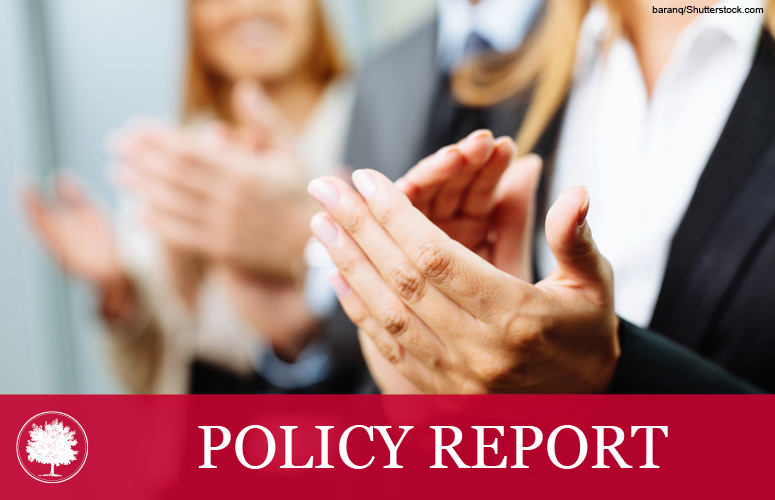One Cheer for the Budget, but Improvement Needed
Feb 10, 2015
By Rea S. Hederman Jr., Greg R. Lawson, Tom Lampman, and Joe Nichols
Summary
Governor Kasich introduced his biennial budget proposal on February 2, 2015. The budget document acknowledges that Ohio will continue its long-standing, multi-decade stagnation relative to the rest of the nation. In fiscal year (FY) 2017, Ohio’s economy is projected to grow 2.2%, versus 2.9% for the U.S. economy, and Ohioans’ personal income is projected to grow 4.4%, versus 5.4% nationally.[1] While the budget contains some positive, and long overdue, pro-growth reforms such as large reductions in the personal income tax; it has many elements that will not boost Ohio’s growth as envisioned but will instead limit prosperity. These elements include a doubling down by the Governor on previously rejected tax increases such as on cigarettes, the oil and gas industry and the Commercial Activities Tax. They also are violations of principles of sound tax policy as The Buckeye Institute outlined in a recent report.
The following are several initial observations:
- Efforts to continue reducing the personal income tax (PIT) should be applauded. A shift from income to consumption-based taxation should also be applauded from a long-term perspective. However, several of the mechanisms chosen to offset revenue losses will counter-act some of the positive impacts from the PIT reduction and violate the principle of tax equity. Additional government spending restraint should form the basis of eliminating the income tax prior to any other increases.
- Education spending continues to grow at a rapid pace despite little academic evidence that vastly increased budgets bene ting bureaucracy yield significant academic gains.
- Efforts to increase the Ohio severance tax will lead to less investment and violates the principle of tax equity by penalizing a single industry.
- Medicaid continues to be what former Governor George Voinovich called the “Pac-Man” of the state budget, especially after the expansion. However, the Governor is wisely seeking to impose limited personal responsibility requirements on those over 100% of the Federal Poverty Level (FPL).
- The state is wisely continuing a reduction in revenue sharing by further reducing reimbursements to local governments for tangible personal property and kilowatt-hour taxes.
- Overall state spending is increasing faster than can be justified through either inflation or population growth. The largest increase comes from moving the Medicaid expansion costs back onto the General Revenue Fund (GRF) books. However, state-only GRF spending also eclipses inflation, albeit less than some previous budgets.
Click here to download the full report: One Cheer for the Budget, but Improvement Needed
1. Office of the Governor, “The State of Ohio Executive Budget, Fiscal Years 2016-2017,”Table B-1: History and Global Insight Baseline Forecast, http://blueprint.ohio.gov/doc/budget/State_of_Ohio_Budget_Recommen- dations_FY-16-17.pdf (accessed February 3, 2015).
